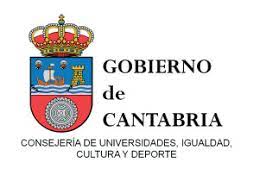The secret life of images: from the portraits of Auristela in Persiles to the limits of Neoplatonism.
DOI:
https://doi.org/10.55422/bbmp.916Keywords:
Cervantes, Los trabajos de Persiles y Sigismunda, Neoplatonism, Portrait, Auristela, Inmaculate conception, Devotion, Diego de Parraces, Counter-ReformationAbstract
Cervantes’ last novel, Los trabajos de Persiles y Sigismunda, through the multiple portraits of Auristela, elicits a reflection on portraiture, delving into the tension between two seemingly irreconcilable aspects. On one hand, there is the vitality of an object with an extraordinary capacity to influence those who contemplate it. On the other hand, portraiture is considered a part of the Neoplatonic heritage, particularly concerning the concept of the lady that arises from the trope of the inner portrait etched in the lover’s soul and its confrontation with the physical portrait. In the Persiles, the portraits of Auristela often function as autonomous entities independent of their model, calling into question the logic of referentiality. Thus, by pushing the premises of Neoplatonism to almost unsustainable extremes and removing them from their natural domain, lyrical poetry, Cervantes reveals in his prose the unattainable banality of the cult of the lady through an idealization that is beyond the grasp of reality. In doing so, albeit tangentially, a commentary is also being made on the immeasurable power of religious imagery in Counter-Reformation Spain.
Downloads
Publication Facts
Reviewer profiles N/A
Author statements
Indexed in
- Academic society
- Sociedad Menéndez Pelayo
- Publisher
- Sociedad Menéndez Pelayo
Global Statistics ℹ️
|
610
Views
|
210
Downloads
|
|
820
Total
|
|
References
AGAMBEN, Giorgio. (2002) Estancias. Madrid. Editora Nacional.
ALCALÁ GALÁN, Mercedes. (2009) Escritura desatada: poéticas de la representación en Cervantes. Alcalá de Henares. Centro de Estudios Cervantinos.
ALCALÁ GALÁN, Mercedes. (2020) «From Literary Painting to Marian Iconography: The Cult of Auristela in Cervantes’s Persiles y Sigismunda». Millennial Cervantes. Bruce R. Burningham (coord.). Lincoln. University of Nebraska Press. 2-21. DOI: https://doi.org/10.2307/j.ctv102bj8r.6
ARMSTRONG-ROCHE, Michael. (2009) Cervantes’ Epic Novel: Empire, Religion, and the Dream Life of Heroes in «Persiles». Toronto. University of Toronto Press. DOI: https://doi.org/10.3138/9781442687578
BASS, Laura. (2008) The Drama of the Portrait: Theater and Visual Culture in Early Modern Spain. University Park. Pennsylvania State University Press.
BATE, David. (2004) Photography and Surrealism: Sexuality, Colonialism and Social Dissent. London. Routledge.
BURCKHARDT, Jacob. (1992) La cultura del Renacimiento en Italia. Madrid. Akal.
CALDERÓN DE LA BARCA, Pedro. (1969) Darlo todo y no dar nada. Obras completas. Vol. 1, Dramas. Edición de Ángel Valbuena Briones. Madrid. Aguilar.
CERVANTES SAAVEDRA, Miguel de. (1998) Don Quijote de la Mancha. Coord. Francisco Rico. Barcelona. Crítica.
CERVANTES SAAVEDRA, Miguel de. (2002) Los trabajos de Persiles y Sigismunda. Ed. Carlos Romero Muñoz. 2nd ed. Madrid. Cátedra.
DA VINCI, Leonardo. (1998) Tratado de la pintura. Ángel González García (coord.). Madrid: Akal.
DE LA TORRE FAZIO, Julia. (2009) «El retrato en miniatura español bajo los reinados de Felipe II y Felipe III». Málaga. Universidad de Málaga, Departamento de Historia del Arte, Tesis doctoral.
FALOMIR, Miguel. (2008) «El retrato del Renacimiento. Prólogo a una exposición.». El retrato del Renacimiento. Miguel Falomir (coord.). Madrid. Museo Nacional del Prado. 17-21.
FREEDBERG, David. (1989) The Power of Images: Studies in the History and Theory of Response. Chicago. University of Chicago Press. DOI: https://doi.org/10.7208/chicago/9780226259031.001.0001
FREEDMAN, Luba. (1995) Titian’s Portraits through Aretino’s Lens. University Park. Pennsylvania State University.
GARGANO, Antonio. (2012) «L’ombra ignuda entro ’l pensier figura: La tradición lírica sobre el retrato de la dama en la poesía del siglo XVI.». Criticón. 114. 33-69. DOI: https://doi.org/10.4000/criticon.1317
HURTADO DE MENDOZA, Diego. (2007) Poesía completa. Edición de José Ignacio Díez Fernández. Sevilla. Fundación José Manuel Lara.
MATA, Carlos. (2000) «Neoplatonismo en la lírica del Siglo de Oro: Dos sonetos del conde de Villamediana.» Anuario Filosófico. 33. 641-653. DOI: https://doi.org/10.15581/009.33.29534
MCKENDRICK, Melveena. (1996) «Retratos, vidrios y espejos: Images of Honour, Desire and the Captive Self in the comedia». Revista Canadiense de Estudios Hispánicos. 20.2. 267-283.
MITCHELL, W. J. T. (2002) «Showing Seeing: A Critique of Visual Culture». Art History, Aesthetics, Visual Studies. Michael Ann Holly y Keith Moxey (coords.). Williamstown. Sterling & Francine Clark Art Institute. 231–50. DOI: https://doi.org/10.1177/147041290200100202
NERLICH, Michael. (2005) El «Persiles» descodificado, o «La divina comedia» de Cervantes. Jesús Munárriz (trad.). Madrid. Hiperión.
PETRARCA. Francesco. (2008) Cancionero. Ángel Crespo Pérez (trad.). Madrid. Alianza Editorial.
PETRARCA, Francesco. (1964) Il canzoniere. Edición de Giancarlo Contini. Turín. Einaudi.
PONCE CÁRDENAS, Jesús. (2012) «La octava real y el arte del retrato en el Renacimiento.». Criticón. 114. 71-100. DOI: https://doi.org/10.4000/criticon.1326
REBOLLEDO, Bernardino de. (1778) Ocios (tomo 1). Madrid. Imprenta de D. Antonio de Sancha.
SALAS BARBADILLO, Alonso Jerónimo de. (1907) Obras. Edición de Emilio Cotarelo y Mori. Madrid. Tipografía de la Revista de Archivos. vol. 1.
SIMAL LÓPEZ, Mercedes. (2017) «Óleo sobre naipe: dos pequeños retratos de Carlos II (según van Kessel) y Mariana de Neoburgo del Museo Nacional de Artes Decorativas». Además de: Revista Online de Artes Decorativas y Diseño. 3. 29-52. DOI: https://doi.org/10.46255/add.2017.3.34
SYSON, Luke. (2008) «Testimonio de rostros, recuerdo de almas». El retrato del Renacimiento. Miguel Falomir (coord.). Madrid. Museo Nacional del Prado. 23-39.
VEGA, Lope de. (1972) Peribáñez y el comendador de Ocaña. Zaragoza. Editorial Ebro.
VILAR, Mariano. (2008) «Concepciones de la imagen de la amada en el Cancionero de Petrarca». Primera Jornada de Lengua y Literatura «Estudios Teóricos e investigaciones en el Campo de las Ciencias del Lenguaje y la Literatura». Buenos Aires. Universidad Nacional de la Matanza. 1-11.
WOODALL, Joanna. (1997) «Introduction: Facing the Subject». Portraiture: Facing the Subject. Joanna Woodall (coord.). Manchester. Manchester University Press. 1-25.
ZAMBRANA PÉREZ, M. (2020) «Y píntola en mi imaginación como la deseo: Dulcinea entre la letra y la imagen». Anales Cervantinos. 52. 145-166. DOI: https://doi.org/10.3989/anacervantinos.2020.006
Downloads
Published
How to Cite
Issue
Section
License
Copyright (c) 2023 Mercedes Alcalá Galán

This work is licensed under a Creative Commons Attribution-NonCommercial 4.0 International License.







